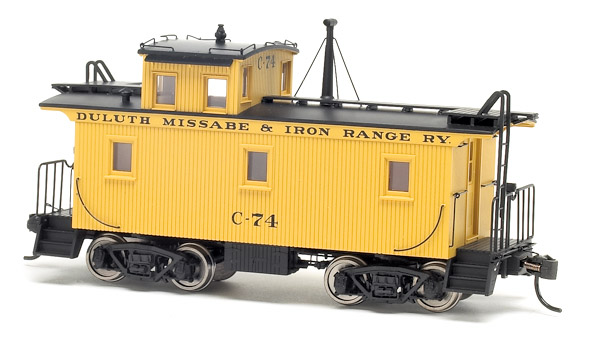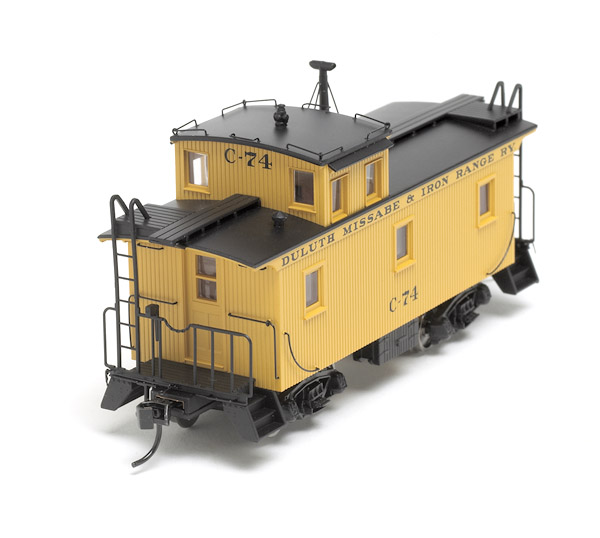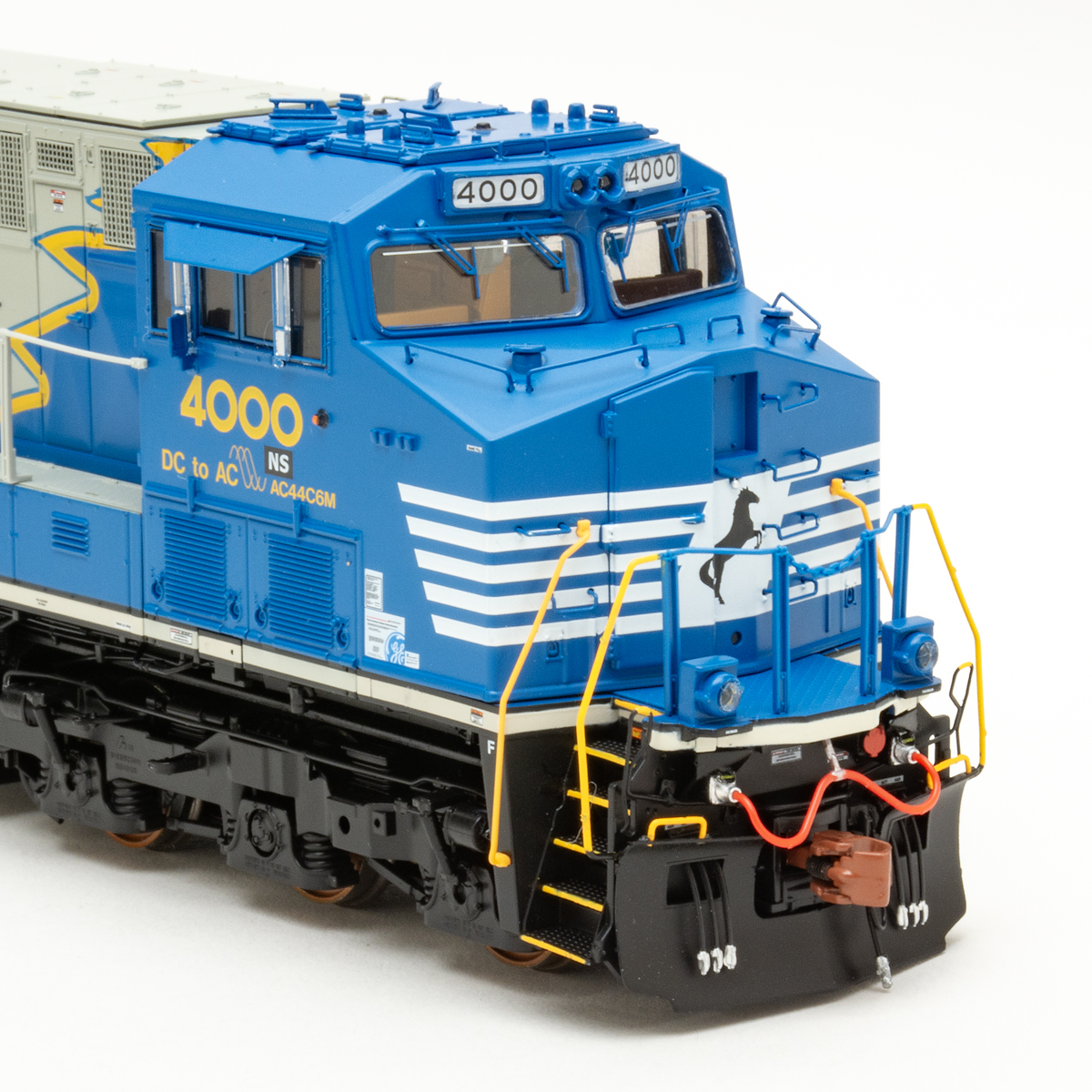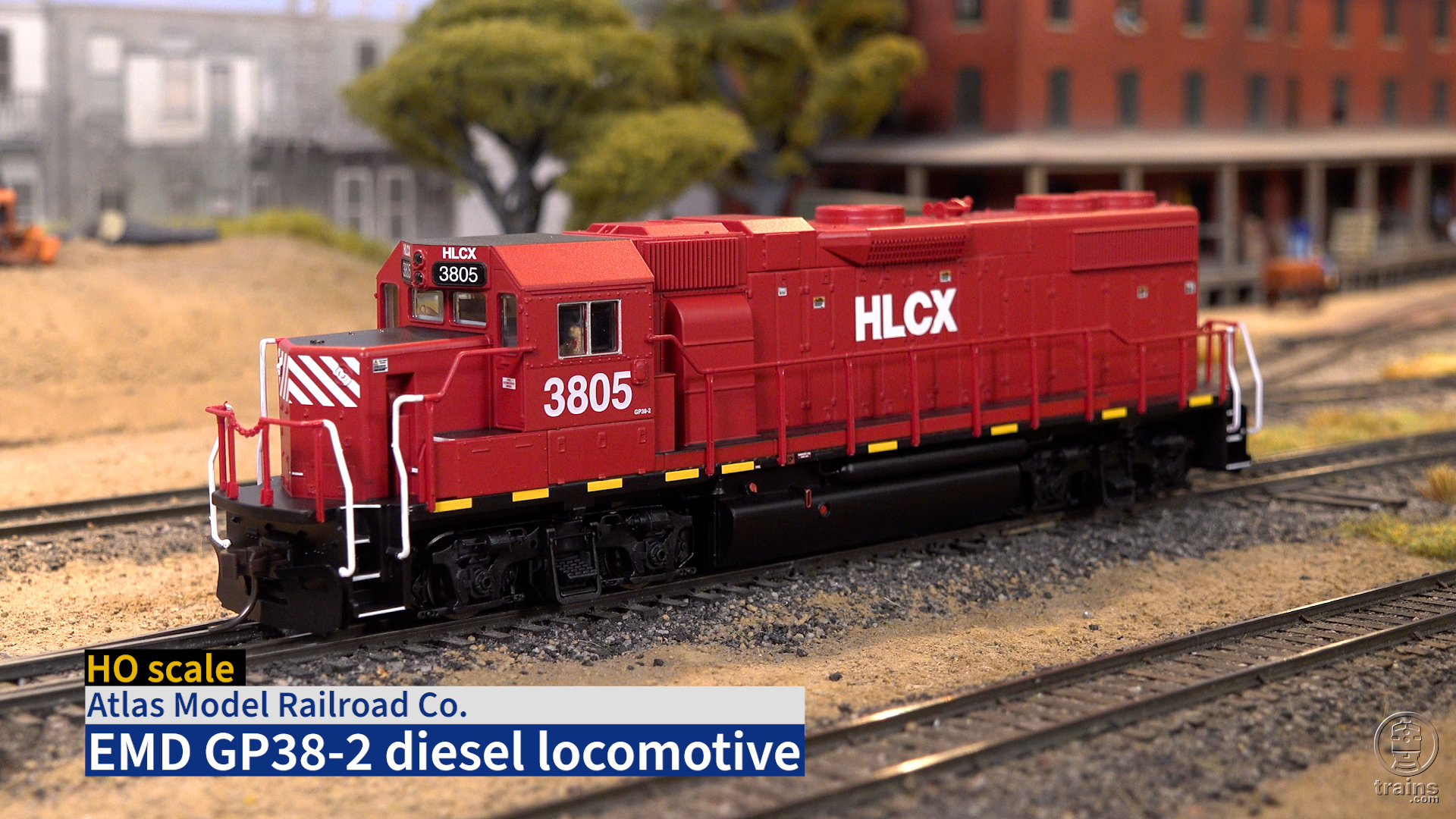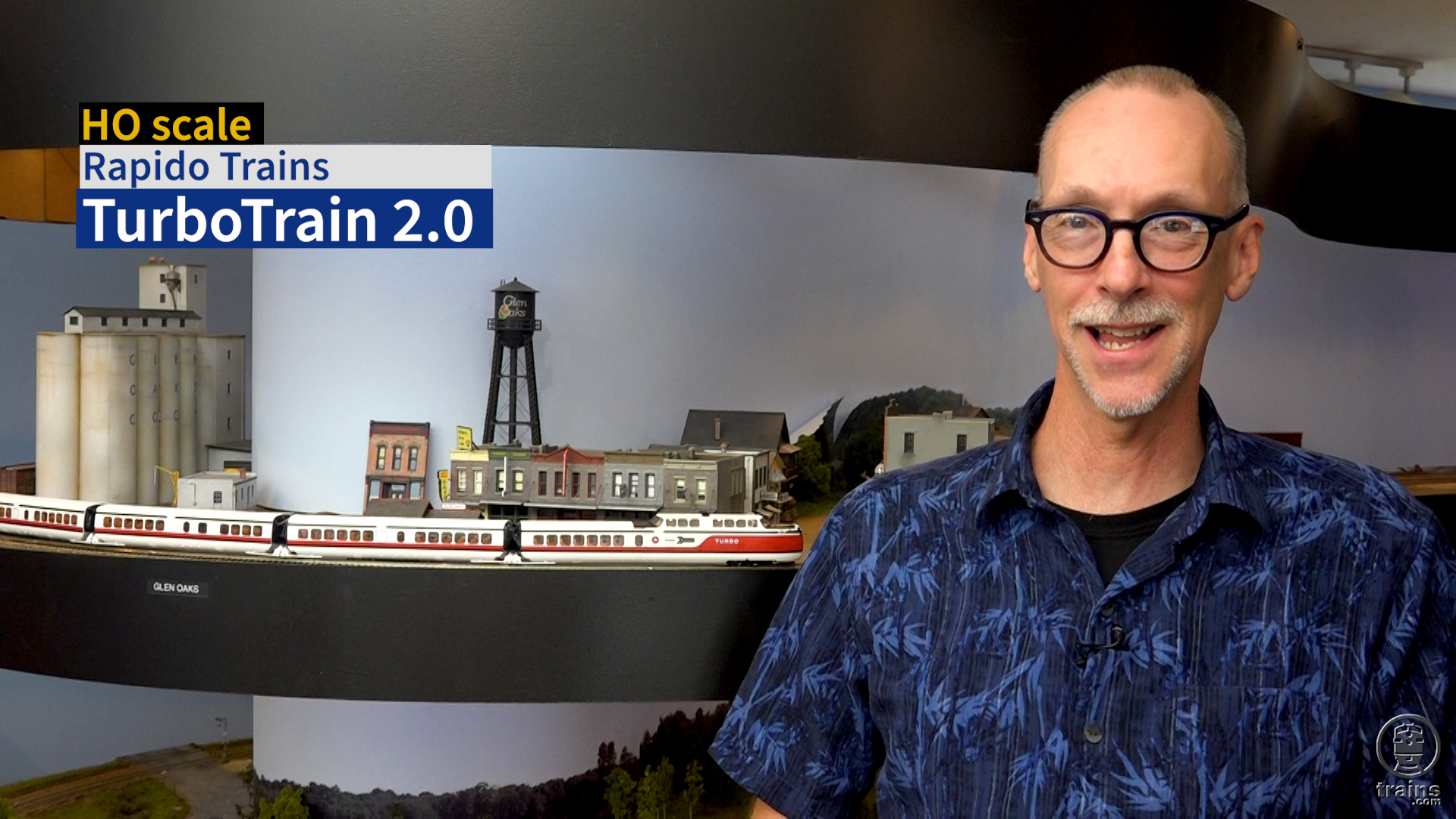A muddled heritage. The Duluth, Missabe & Iron Range Ry. was formed by the merger of two competing ore-hauling roads in 1938. The merged caboose fleet was renumbered to eliminate duplication; cars numbered C-100 and above started service on the Duluth & Iron Range, while those below C-100 came from the Duluth, Missabe & Northern. Walthers’ cars come from the latter group, based on their numbers.
It’s difficult to track down the cars’ origins more specifically. Local builders made the cabooses, so individual cars tended to vary. At least some of them were built by joining two smaller four-wheel cabooses. And the DM&IR typically spent the winter months, when ore boats couldn’t navigate frozen Lake Superior, rebuilding its rolling stock. As such, these outwardly similar cars soon accumulated unique discrepancies.
The paint scheme places this model between 1938, when the DM&IR was formed, and 1960, when the yellow cabooses were repainted red. The model has a steel center sill, but lacks the heavy side sills refitted onto the cabooses starting in the 1950s.
Our sample came painted DM&IR yellow, with black lettering and roofs. The paint was smooth and opaque, and the lettering straight. The caboose number above the end doors was absent. The car has a simple interior, molded in one piece from tan plastic.
I was impressed with the model’s wire smokejack supports and uncoupling levers. And though most of these cabooses had brake wheels and round-topped end ladders, the lever-style brake and angled handrails on our sample matched a photo of the prototype no. 74.
The model has machined metal wheels, mounted in gauge on plastic axles, and Kadee-compatible magnetic knuckle couplers, body-mounted at the correct height. The caboose weighs just under 21/2 ounces, which is lighter than the 3 ounces recommended by National Model Railroad Association RP-20.1 for a car of this length.
Walthers’ DM&IR caboose is a sharp looking model with an impressive level of detail. Even if you don’t model one of the roads that ran this caboose, you might find this well-made HO scale car to be a starting point for a repainting or kitbashing project.
Price: $49.98
Manufacturer
Wm. K. Walthers Inc.
P.O. Box 3039
Milwaukee, WI 53201
www.walthers.com
Road names: Duluth, Missabe & Iron Range (three car numbers available); Chicago Great Western (three numbers); Duluth & Northeastern (one number)
Era: 1938 to 1960
Features:





